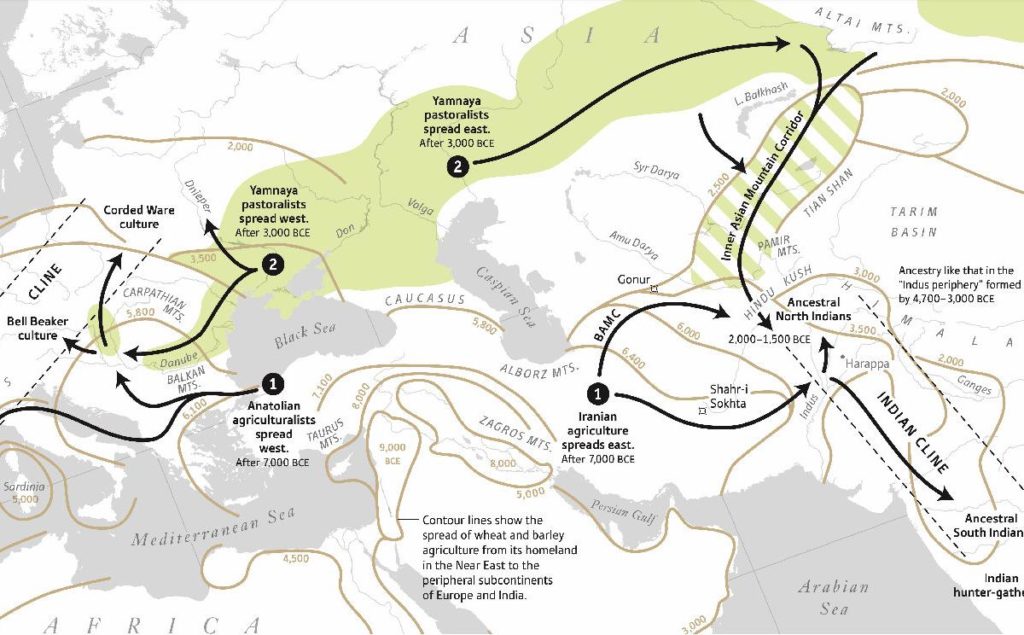
The History Podcast continues and this week we present Episode 2.
We take a detour and talk to Razib Khan, founder of the Brown Pundits blog and the BrownCast. Razib is a Geneticist by profession and publishes a sub-stack on what genetics tells us about our past. We look at the people who inhabited the Indian Sub-continent through the lens of genetics and ancient DNA and talk about what that tell us about the strands of origins, migrations, invasions, and
assimilation amongst the people of who have inhabited the sub-continent for millennia.
Apart from the usual suspects, the Mitannis, the ancient Greeks and graves in Kazakhstan make an appearance. So do Agent K and Agent J from the movie Men in Black. Joining Maneesh Taneja in this conversation are Gaurav Lele, Mukunda Raghvan and Shrikantha Krishnamachry.
We look forward to your comments and feedback.
Episode 2: Indian history through genetics
You can listen on Libsyn, Apple, Spotify, and Stitcher (and a variety of other platforms).
Speakers & their twitter handles:
Razib Khan – @razibkhan Gaurav Lele- @gaurav_lele, Mukunda Raghvan- @raghman36, Shrikanth Krishnamachry – @shrikanth_krish and Maneesh Taneja- @maneesht
Links to Sources/Reference Material:
- https://razib.substack.com/
- https://reich.hms.harvard.edu/
- https://scholar.harvard.edu/vagheesh/home
- https://razib.substack.com/p/podcast-countdown-to-2021-day-2-vagheesh
- India genetics – Gene Expression (gnxp.com)
- Reconstructing Indian Population History (nih.gov)
- Genetic Evidence for Recent Population Mixture in India (nih.gov)
- The Formation of Human Populations in South and Central Asia (nih.gov)
- An Ancient Harappan Genome Lacks Ancestry from Steppe Pastoralists or Iranian Farmers – PubMed (nih.gov)
I don’t understand why Numismatic, Historians, Archaeologists & Geneticists are not collaborating but i do understand why Indian govt. makes it harder to get samples in India {since modern politics have been developed on ‘theoretical’ assumptions based on similar studies from elsewhere esp. Europe & modern research from subcontinent is challenging those assumptions as well as politics which has emerged in modern India} –
https://www.facebook.com/shailen.bhandare/videos/10158606604142620/
https://www.youtube.com/watch?v=NwwKfTsD-OI
If anybody wants to see what Numismatic studies illuminate can check the above lectures {Esp. note with regards to central regions of India & how regional divide can be observed via. Numismatic studies}.
Razib is right, the desert zone was bigger but I think parts of India east of Rajasthan and south of Gujarat/Maharashtra might be mostly outside of it. However this is not based on a precise value, just me eyeballing a vegetation map.
W could predate recent steppe migrations depending on the type of W in question.
Open question: Razib mentioned that the battle to overthrow the Shang dynasty by the Zhou Dynasty in China can be dated with precision using astronomical calculations. Now, the proponents of a deeper Indian civilization (and, as a corollary, the Out-of-India Theory) have dated the Mahabhara War to ~3100 BC or something, apparently using astronomical calculations too.
Are such astronomical calculations trustworthy and foolproof, or do they have huge margins of error?